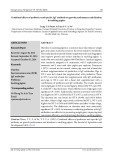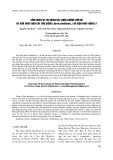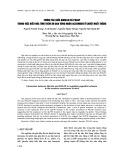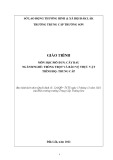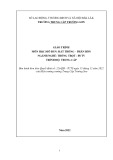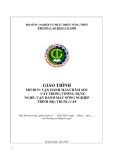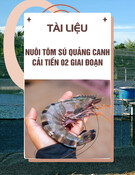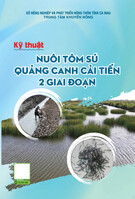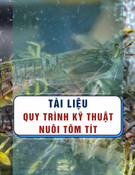
Collaboration for Agricul
ture and Rural Development
(CARD)
Program
306
DEMONSTRATION OF SNAKEHEAD FISH IN TANKS AS A NEW MODEL OF
THE TRADITIONAL VAC SYSTEM TO REDUCE ORGANIC POLLUTION AND
IMPROVE INCOME FOR FARMERS IN THE CENTRAL COASTAL VIE
TNAM
Project title:
Improving traditional integrated farming systems (VAC)
-
a new livelihood option for
poor farmers in the coastal communities
Project c
ode
:
CARD
027/07 VIE
Author(s):
Võ V
ăn B
ình
1
,Đào Văn Phú
1
, Nguy
ễ
n Quang Chương
1
, Mai Văn Tài
1
,
Ass
oc. Prof
.
Ravi Fotedar
2
, Jane Fewtrell
2
Project Implementing organisations:
1
Centre for Environment and Disease Monitoring in Aquaculture (CEDMA)
–
RIA1
2
Agriculture and Environment
-
Division of Science and Engineering
-
Curtin
University of Technology
,
Australia
SUMMARY
In order to overcome the limitation of land available for aquaculture in the central costal region of
Vietnam and to reduce organic pollution in traditional integrated fish farming, a new method was
developed called the ‘improved VAC’
In traditional VAC systems the manure from farm animals is
released into fish ponds whereas in the ‘Improved VAC’ the manure is used for earthworm culture.
The worm production is then used to feed high value fish species in tanks.
In this project snakehead
fish (Channa maculatus) cultured in tanks and fed partly on earthworms,
resulted in an increase in income generation for farmers. The results have shown that the fish growth
rate was relatively high, reaching 700 g/fish after 5 months. The FCR for the en
tire production cycle
was 5.22, 4.75 and 6.14 in demonstrations in Thanh Hoa, Ha Tinh and Quang Tri, respectively. Water
quality remained within the acceptable range for fish health with NH3 and NO2 levels in the tanks
being significantly lower than those
in ponds. Economic analysis indicated that there was a high net
profit in all demonstrations with a ROI of 71%, 104% and 41% in Thanh Hoa, Ha Tinh, and Quang
Tri respectively.
The results demonstrate that culture of snakehead fish in tanks fed a partia
l diet of earthworms can
increase income to farmers thus other farmers in the region could benefit from adoption of the model.
1.
Introduction
Integrated farming systems encompassing
gardening, fish pond and livestock pen (under
Vietnamese acronym VAC
) is the most
popular practice in the rural communities of
Vietnam and other countries in Asia including
China (Vincke, 1997). This farming model is
very efficient in terms of recycling of the
materials in the system (Bilard et al., 1990).
However, the pro
ductivity of the aquaculture
(pond) component is quite low ranging from a
few hundred kilograms to an average 1,500
-
1,700 kg per ha per year (0,015
-
0,017
kg/m2.year) (Kumar et.al, 2003). Aquatic
species produced in the traditional VAC
systems carry a hig
h risk of contamination
with organisms such as E.coli and parasites.
Acinetobacter spp. that were exposed to the
high organic load of the VAC system for two
months and isolated from composite water
-
sediment samples were found to have an
increased resistanc
e to oxytetracycline and
sulfamethoxazole (Andreas Petersen et al.,
2002). E.coli , isolated from mothers involved
in integrated fish farming were found to have
increased antibiotic resistance compared to
those isolated from mothers who were not (
Kalter
, 2009).
Therefore, it would be beneficial for the
traditional VAC system to be improved to








